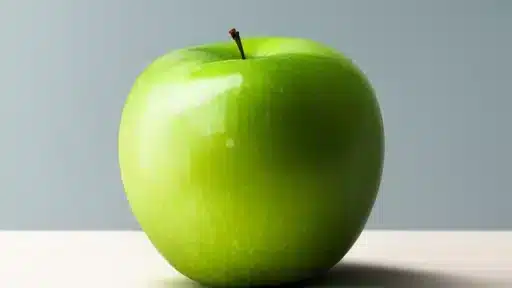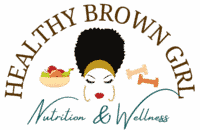
Table of Contents
Ever wondered why sticking to a healthy diet is so hard? In a world where tips for eating healthier are at our fingertips, we can easily search Google for “healthy dinner recipes,” “what are healthy carbs,” or my personal favorite, “8 tips for healthy eating.” But somehow, even with all this accessible information at our fingertips, eating healthy is still a challenge.
Sound familiar? You are not alone! Our society bombards us with constant processed fast food advertisements. Stack on the added convenience of takeout services like Doordash or Uber Eats, and it’s no wonder why making the right choices for our bodies is a constant uphill battle.
While we may have the knowledge, implementing it is a whole different story.
In this blog post, I will outline for you 8 tips for healthy eating. But here is the key to actually incorporating these steps into your daily life. Do them one or two at a time. This article is a blueprint that you can refer back to when you have mastered one step and are ready to master another.
In addition to offering tips, this article also provides scientific data to enhance your understanding of the significant impact these changes can have on your health.
So, let’s dig in, one bite at a time.
1. Conquer Sugar Cravings
Ever battled that mid-day crash where your brain feels foggy and you feel like your energy levels have bottomed out? When the only thing that can give you LIFE is a caramel macchiato from Starbucks, a HOT frosted Krispie Kream donut, or *insert your favorite sweet treat* Welcome to the sugar craving matrix, and a major health hurdle for about 75% of Americans.
According to research, excessive sugar intake is linked to nearly every chronic health condition you can think of. This includes depression, obesity, diabetes, metabolic disorders, cardiovascular disease, cognitive impairment, and even cancer. 1
So does this mean all sugar is bad and should be avoided like the plague? That might be a bit overboard and likely will make things much worse in the long run.
So what should you do?
Breaking down sugar
First, it’s important to understand that sugar is a simple carbohydrate that can be found in many foods composed in different ways. Natural sugars, a monosaccharide also known as fructose and glucose, can be found naturally in fruits, vegetables, and natural sweeteners like honey.
Sucrose is the refined processed sugar that we find in most of our sweet treats, candies, etc.
It is also known as a disaccharide composed of glucose and fructose molecules bonded together. This is the type of processed sugar that should be limited in our diets. Sugar alcohols, also referred to as pylols, are another form of sugar. While they occur naturally in certain foods, they are also artificially added to processed foods to increase sweetness.
I won’t delve too deeply into these sugar variants, as they contain fewer calories and are generally safe when consumed in moderation. However, I might explore the potential risks associated with them in a future article, so stay tuned.
All sugar is converted into glucose (energy) in the body, which is why we use sugary foods to give us a boost when we feel low on energy. However, being mindful of our processed sugar intake is key to a healthy diet.
Understanding your sugar craving triggers
Cravings for sugar can be triggered for a number of reasons, including sleep deprivation, mood, hormone imbalances,, or simply habit. It’s important to mindfully consider which trigger applies to you so you can appropriately address it.
For example, if you find that your sugar cravings often arise from sleep deprivation, prioritizing a consistent sleep schedule and getting enough restful sleep can help curb those cravings.
On the other hand, if your cravings are more related to mood or emotional factors, finding alternative ways to cope with stress or seeking support from a therapist, counselor, or coach can be helpful.
Additionally, hormone imbalances can play a role in sugar cravings; for example, women during certain phases of their menstrual cycle may experience heightened cravings for sweets 2. However, hormonal imbalances,, such as those present in some diabetic patients may also cause these cravings.
Seeking guidance from a healthcare professional is important to help you understand if a hormonal imbalance is a possibility.
Lastly, your trigger may be just out of habit. Breaking the habit of reaching for sugary foods can be challenging but not impossible. This requires you to make a conscious decision when those cravings creep in
One way is by replacing your normal sugary snacks with healthier alternatives, such as fruits or natural sweeteners like honey or maple syrup. Over time, this can help retrain your taste buds and reduce cravings.
You can also consider detoxing your body from added sugar for 30 days. This is much harder than you would think because sugar is added to many foods we consume. However, it will make you more aware of how much sugar you are consuming without your knowledge. This can be done by reading food labels ( more on this later) and learning the various names for added sugars, such as high-fructose corn syrup, cane sugar, and other sweeteners.
Other ways to crush your sweet tooth are to opt for whole foods that contain only natural sugars, such as fresh fruits, which not only provide sweetness but also come with essential vitamins, fiber, and antioxidants.
Additionally, incorporating more complex carbohydrates like whole grains can help provide sustained energy and reduce the need for added sugars because your energy levels will stay consistent
.So rather than demonizing sugar entirely, aim for a well-rounded approach that includes nutrient-dense foods while being mindful of your sugar intake. By making conscious choices and finding healthier alternatives, you can still enjoy the occasional sweet treat without compromising your health.

2. Choose Whole Foods
Another tip for healthy eating would be to choose more whole foods over processed foods as a way to balance your diet.
In a recent study, Ultra-processed foods were found to be linked to a number of chronic health conditions and negative health outcomes, making these foods and their impact a global health concern 3.
These foods are typically higher in sodium, sugar, and processed,, unhealthy saturated fats which all contribute to the development of disease if consumed in excess. To gain a better understanding of what processed and ultra-processed foods are, check out this article written by the Cleveland Clinic.
By simply choosing whole foods, you will reduce your intake of excess sugar, salt, and saturated fats drastically. This will have a major impact on your health over time.
Whole foods provide essential nutrients, vitamins, and minerals that promote good health and well-being. Including a variety of fruits, vegetables, lean proteins, whole grains, and healthy fats can help support a balanced diet.
Whole-food hacks
Some simple hacks to incorporate more whole foods vs processed foods include meal prepping and planning ahead to ensure you have healthy options readily available.
Additionally, try experimenting with new recipes that focus on using fresh ingredients and whole foods. Shopping at local farmers’ markets or opting for organic produce can also help you incorporate more whole foods into your diet.
Add color to your plate by incorporating different-colored vegetables into your meals.
Keep in mind that if whole foods are less accessible for you, minimally processed foods can also be a good alternative. These foods undergo minimal processing and retain more of their natural nutrients compared to heavily processed options.
A healthy diet can still include canned and frozen fruits and vegetables. Just look for items with fewer additives and artificial ingredients on the ingredient list.
Additionally, consider adding more lean meats and plant-based protein sources such as legumes, nuts, and seeds to your meals. These can be excellent substitutes for processed meats or meats high in saturated fats. They can also provide you with a healthy source of energy.
Remember, small changes over time can lead to significant improvements in your overall health and well-being.
3. Embrace Healthy Fats
That’s right! You need fat in your diet. But like sugar, it’s important to understand what fats are healthy vs those that should be limited in the diet. It is also helpful to know what foods contain the fats your body needs. So forget all the recommendations to eat a low-fat diet, because honestly, some research alludes to the fact that that recommendation has done more harm than good over the years. 4 Choosing healthier fats is the best way to go.
Let’s take a closer look at fat and a healthy way to incorporate it into your diet.
The role of fat
The bottom line, dietary fat is essential for the body to function properly. It is used for storing energy, maintaining body temperature, storing essential vitamins (A, D, E,and& K), and supporting chemical processes that produce cells and hormones in the body.
The body can also create fat in the body (triglycerides) through a process called lipogenesis. Lipogenesis helps us to maintain energy levels. This chemical process synthesizes fat from excess carbohydrates in the body. However, an overconsumption of carbohydrates can lead to weight gain over time due to excess fat being created and stored in the lipogenesis process.
Aside from exercise, polyunsaturated fats, such as omega-3 and omega-6 fatty acids, play a crucial role in regulating various metabolic processes, including lipogenesis5. These healthy fats can actually help reduce the synthesis of new fat cells and promote the breakdown of stored fat for energy. More on polyunsaturated fats below.
Types of fat
There are two main types of fat that we consume in our diets. Saturated fats and unsaturated fats.
Saturated fats are typically oils that are solid at room temperature. They can also be found in foods like meat, cheese, and dairy products, as well as fried and processed foods in the form of trans fats. These fats should be consumed moderately since they contribute to high LDL “bad” cholesterol levels and increase the risk of cardiovascular diseases.
Unsaturated fats are oils that remain liquid at room temperature and are typically found in plant-based foods and oils. These fats are further classified into two subcategories: monounsaturated fats and polyunsaturated fats. These fats contribute to your HDL “good” cholesterol levels.
Monounsaturated fats are found in plant foods such as canola, peanuts, olive oil, and nuts. Polyunsaturated fats, on the other hand, can be found in foods like fatty fish, walnuts, and flaxseeds.
These healthy fats are rich in omega-3 and omega-6 fatty acids, which are essential for brain health and have been linked to lower levels of inflammation, improved heart health, and enhanced cognitive function.
In summary, unsaturated fats are considered healthy fats and should be included in a balanced diet. They provide important nutrients and play a crucial role in maintaining good health.
Prioritizing your consumption of these fats while moderating your saturated fat consumption is an important healthy eating habit that is sure to improve your overall health and well-being.
4. Stay Hydrated
We tend to overlook water due to its lack of flavor, resulting in reduced enjoyment for many individuals when drinking it. Nevertheless, water plays a crucial role as a vital nutrient for our bodies. Even a short period of dehydration can impact our overall health, potentially leading to loss of life after just a few days.
So why is water so important?
Water, which is also found in foods in varying amounts, is essential for several bodily functions, including regulating body temperature, supporting digestion, and flushing out toxins.
The amount of water each person needs to drink can vary based on age, sex, weight, and activity level. The average healthy person should consume at least 2.5 to 3.5 liters daily, with men typically requiring more than women.
If we don’t drink enough water, we run the risk of dehydration, which may lead to cognitive impairment, gastrointestinal issues, impaired kidney function, and low blood pressure. 6
A few easy ways to ensure you drink enough water throughout the day are to carry a reusable water bottle with you throughout the day, set reminders on your phone to drink water at regular intervals, and include hydrating foods in your diet, such as fruits and vegetables.
Another hack would be to add fruits like lemons, watermelon, or cucumber (yes, cucumber is technically a fruit) to add a hint of flavor to otherwise bland water.
Lastly, monitoring the color of your urine can be a simple indicator of your hydration level; clear or pale yellow urine generally indicates proper hydration, while darker urine may suggest dehydration.
Remember, staying hydrated is a simple yet crucial step to maintaining healthy overall well-being.
5. Mindfully Practice Portion Control
In a society where pushing bigger or more is better, controlling portion sizes can be a difficult hurdle.
However, just like the quality of food is important, managing portions is also important for maintaining a healthy weight and preventing overeating. Slowing down and being mindful have been shown to be helpful in being able to manage unhealthy eating patterns such as overeating 7.
This means avoiding mindless eating habits like eating while watching TV, driving, or working so you can tune in to how much you are consuming. Taking time to savor each bite of yoyourood can also help you to observe how your body feels as you eat.
It’s important to note that mindfully portioning your food does not mean restricting your portions. You simply tune into your body, so you are more aware of whether or not you are still hungry after a certain amount. If you have finished serving and are still hungry, you are free to eat more.
But it’s important to mindfully consider if you are still hungry or if there is another emotional or external trigger causing you to want more food.
Taking time to mindfully consider potential triggers that may be influencing your eating habits can be done by pausing and reflecting on your feelings before, during, and after eating. In addition to emotional awareness, practicing gratitude during your meals can also enhance mindful eating.
This looks like taking a moment to express gratitude for the food on your plate, which can shift your mindset and enhance the overall experience of eating. This can help you develop a more positive relationship with food and promote a healthier approach to nourishing your body.
The main goal of mindful eating is to cultivate a sense of awareness, appreciation, and connection with your food. By incorporating these practices into your daily routine, you can mindfully manage your portions and ultimately support your overall health.
6. Decoding Food Labels
Taking time to read food labels can be time-consuming and overwhelming if you don’t know what you are looking for. However, there are two simple tips that can easily help you decode labels to ensure you are making healthy choices when selecting foods.
Those tips are to check the serving sizes and read the ingredient list.
Check the serving sizes
Specifically, when checking food labels, pay attention to serving sizes because understanding them is crucial. For instance, a common serving of dry cereal is typically just one cup (8oz). Many cereal bowls these days hold twice that amount.
This matters because misjudging serving sizes can lead to consuming more calories than intended. This principle applies universally, even to seemingly single-serving items like ramen noodles, where one package often contains two servings.
This means that if the food label on a pack of ramen says 160 calories per serving, you are consuming 320 calories if you eat the entire package.
My intent here isn’t to promote obsessive calorie counting but to promote awareness about what you are consuming. By being mindful of serving sizes, you empower yourself to make better-informed decisions about your food intake.
Read the ingredients list
Another important area to pay attention to on food labels is the ingredient list. This topic can be a blog all on its own, however, a basic understanding of how to read this section can go a long way.
Ingredients in a product are typically arranged based on their quantities, with the most abundant ingredient listed first. Whole or minimally processed foods typically have simple, easy-to-read ingredient lists.
Take, for instance, a nutritious spaghetti sauce brand that consists of just three ingredients: tomatoes, water, and salt. This implies that tomatoes are the primary component of the sauce, while salt is the least prominent.
However, a more processed brand may list tomatoes, water, high-fructose corn syrup, salt, corn syrup, carrot fiber, sugar, citric acid, spices, and natural flavors. This sauce’s third-highest ingredient is high-fructose corn syrup, which is a form of sugar. But also note that corn syrup, which is another form of sugar, and sugar (aka sucrose) also appear on the label, making three different types of sugar present. Making sugar is the most abundant ingredient on the list.
Let that sink in. How often do you think you consume foods that potentially contain excessive amounts of ingredients that are linked to chronic health conditions?
By simply making it a habit to read food labels, you can enhance your awareness and opt for healthier alternatives, ultimately improving your long-term health and well-being.
7. Eat Your Grains
Whole grains get a bad wrap. Many people opt for processed bread and pasta because they feel like they taste better. And it’s possible that they do, due to processing and the addition of hidden ingredients to improve the taste. However, take it from me: you can learn to love whole grains.
By incorporating whole grains into your diet, you can enjoy not only their taste but also their nutritional value. Whole grains contain essential components like wheat germ, bran, and endosperm, which are often stripped away during processing. This is why the texture is a little more chewy and why processed grains have little nutritional value.
Gradually introducing whole grains into your meals can help you develop a taste for them, and in time, you may find that you actually prefer their flavor over processed bread and pasta.
Don’t be afraid to explore different varieties of whole grains, such as quinoa, brown rice, or whole wheat bread and pasta, to add variety and nutritional value to your meals. Search for recipes that include these foods.
Whole grains are important because their fiber content helps to maintain a healthy digestive system and can help prevent constipation. The insoluble fiber content also helps to maintain lower cholesterol levels.
Including these fibrous, “healthy” carbs in your diet can also help regulate blood sugar levels and promote feelings of fullness, making it easier to manage your weight.
Additionally, fiber-rich foods can lower the risk of developing certain diseases, such as heart disease and diabetes. Therefore, including them in your meals can have significant benefits in the long run.
8. Get moving
When you think of exercise, do you get overwhelmed? Many people think that exercise requires hours in the gym, weight lifting, or marathon running. That simply isn’t the case.
Truth is, physical activity doesn’t have to be complicated, dreadful, or time-consuming to be beneficial.
Even small amounts (20-30 minutes daily) of exercise can make a big difference in your health and well-being. Simple activities like walking, biking, or dancing can help improve cardiovascular health, boost mood, and increase energy levels.
Regular physical activity has also been shown to reduce the risk of chronic conditions such as obesity, heart disease, and certain types of cancer. It can also improve sleep quality and reduce stress levels. Remember, finding activities that you enjoy and that fit into your schedule is key to making exercise a sustainable habit.
So, don’t be intimidated by the idea of exercise. Start small and do what you love, not what you feel you have to do! Over time, gradually increase your intensity and duration to enhance the benefits. Your future body will thank you for it.
Summary
In summary, making sure to prioritize lean, whole, nutrient-dense foods, limit processed and sugary items, drink plenty of water, listen to your body, and incorporate regular physical activity into your routine are all small, simple steps that will make a big impact.
Remember, tackle these tips one or two at a time to ensure sustainable changes to your lifestyle in the long run.
For more information on how you can improve your health, check out my article 10 Healthy Habits to Improve Your Health. If you are interested in learning about the health benefits of intermittent fasting, check out my article Intermittent Fasting & Pre-Diabetes: Research Highlight.
Lastly, if you’re ready to start your health and wellness journey with me, grab your FREE guide to overcoming weight loss barriers.
Sources:
- Gillespie, K., Kemps, E., White, M. J., & Bartlett, S. E. (2023). The Impact of Free Sugar On Human Health—A Narrative Review. Nutrients, 15(4), 889. https://doi.org/10.3390/nu15040889 ↩︎
- (Menstrual Cycle and Food Cravings in Young College Women, 1987) ↩︎
- Elizabeth, L., Machado, P. P., Zinöcker, M. K., Baker, P., & Lawrence, M. (2020). Ultra-Processed Foods and Health Outcomes: A Narrative review. Nutrients, 12(7), 1955. https://doi.org/10.3390/nu12071955 ↩︎
- BSc, K. G. (2018, March 27). Do Low-Fat diets really work? Healthline. https://www.healthline.com/nutrition/do-low-fat-diets-work#obesity-epidemic ↩︎
- Kersten, S. (2001). Mechanisms of nutritional and hormonal regulation of lipogenesis. EMBO Reports, 2(4), 282–286. https://doi.org/10.1093/embo-reports/kve071 ↩︎
- Popkin, B. M., D’Anci, K. E., & Rosenberg, I. H. (2010). Water, hydration, and health. Nutrition Reviews, 68(8), 439–458. https://doi.org/10.1111/j.1753-4887.2010.00304.x ↩︎
- O’Reilly, G., Cook, L., Spruijt‐Metz, D., & Black, D. S. (2014). Mindfulness-based interventions for obesity-related eating behaviours: a literature review. Obesity Reviews, 15(6), 453–461. https://doi.org/10.1111/obr.12156 ↩︎

I hold an undergraduate degree in Nutrition and Dietetics, and am currently pursuing my masters degree in Positive Psychology. I am also member of The Academy of Nutrition and Dietetics so I can stay up to date on all the latest nutrition news and research. I am dedicated to sharing what I have and am learning both personally and professionally with women seeking to lose weight and improve their lifestyles.
